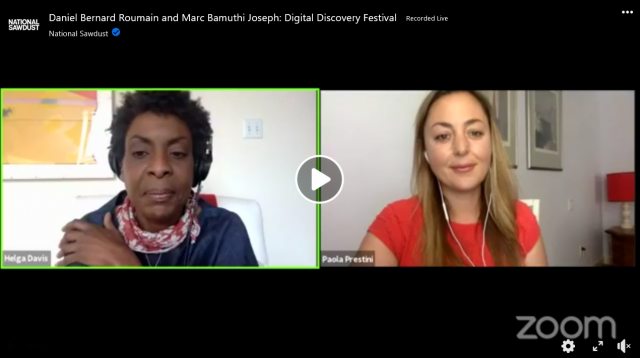Allegro
Field of vision
Teaching artists must be prioritized as we recover from the pandemic
Volume 121, No. 4April, 2021
We are now more than a year since the pandemic forced musicians and other artists to completely change the way we live, work, teach and perform. Despite the progress that’s been made, much uncertainty remains. Measuring the full impact of the virus — including loss of life, loss of employment and access to education — is ongoing and has brought us face to face with a system continues to leave poor and historically marginalized communities disproportionately affected.
When the lights went out in theatres, concert halls and studios, we became disoriented and sought safety, sense and guidance. In response, leaders in the field of teaching artistry gathered together and rallied members from organizations like the Teaching Artist Guild/Association of Teaching Artists, National Guild for Community Arts Education, NYC Arts in Education Roundtable, Creative Generation and Teaching Artists of the Mid-Atlantic. The call to respond was clear, and crucial next steps were identified.
Collectively, the group took on the Herculean task of painting a picture of the damage the pandemic had wrought upon the teaching artist field and the communities they serve. Using research data and field surveys, TA leaders advocated for the recognition of teaching artists as essential workers in a compelling report delivered to funders, philanthropists and fellow teaching artists. While findings generated weren’t published publicly, many others were. For instance, Dennie Palmer Wolf’s blog post on the role of the teaching artist was a powerful and comprehensive report on the vital role teaching artists play in the lives and prospects of young learners.
Throughout the past year teaching artists and supporting organizations have continued a show of strength, exemplifying qualities most capable of envisioning, workshopping and implementing substantial responses to disrupted cultural arts, learning environments and community dynamics. Responses inspired and built by the need for community support and cultural arts engagement have largely come from the teaching artists field. For instance, Courtney Boddie’s series #keepmakingart provides a platform for creatives to share their pandemic experiences.
Furthermore, in response to a constantly shifting landscape in which TAs create and facilitate cultural arts experiences, organizations like Lifetime Arts, a national leader in creative aging program development, has made adjustments in order to conduct TA training and deliver cultural arts programming to seniors and adult learners. The Teaching Artist Project, hosted by Community Word Project in New York City, also continues to apply creative, collaborative solutions that ensure continuity and accessibility in programming to serve our young learners, empower our youth leaders and provide training for experienced teaching artists in a supportive and collegiate atmosphere.
On a grander organizational scale, the Association of Teaching Artists (based in New York) — the oldest teaching artists organization — has merged with the Teaching Artist Guild (based in California). The new joint organization has embraced a strategic plan that mobilizes its members with fresh commitment and an equitable vision that integrates the needs of the diverse social, civic and cultural need of communities nationwide.
Lauded for its development of the Pay Rate Calculator and Teaching Artist Asset Map (a digital map built to amplify the depth and presence of teaching artists on a national scale), the Teaching Artist Guild has also launched TAG Slack, an open, inclusive forum for teaching artists to share opportunities, resources and connect with one another has had a positive impact on its members. Also in progress is a youth lead professional development series that activates and engages emerging youth leaders.
National Sawdust also made space for voices from the field when its Digital Discovery series featured master teaching artists Mark Bamuthi Joseph and Daniel Bernard Roumain. Through conversation and performance, they demonstrate the shift in collective consciousness that the pandemic has incited while acknowledging the all-important intersections between art making and social justice issues. The systems in place that we have for so long embraced are responsible for the victimization of the most vulnerable in our communities — namely our family, friends and neighbors who are Black, Indigenous and People of Color.
Here we are, more than a year later, with new federal and state leadership that holds value in teaching artists and cultural arts education. There is encouraging news emerging from federal, state and local agencies. The NEA is receiving $135 million from the America Rescue Plan. The New Jersey State Council of the Arts is disbursing $3 million to nonprofit organizations. Senate Majority Leader Chuck Schumer has expressed the importance of relief for the arts sector. However, we are far from a recovery and far from return to normal.
As this year has shown, few fields take action with such a spirit of sharing, collaboration and ingenuity while also striving for equity, accessibility, transparency and accountability like the teaching artist field.
Drummer David Freeman, a member of Local 802 since 2007, serves on the board of the Teaching Artists Guild.
References and Recommended Reading:

